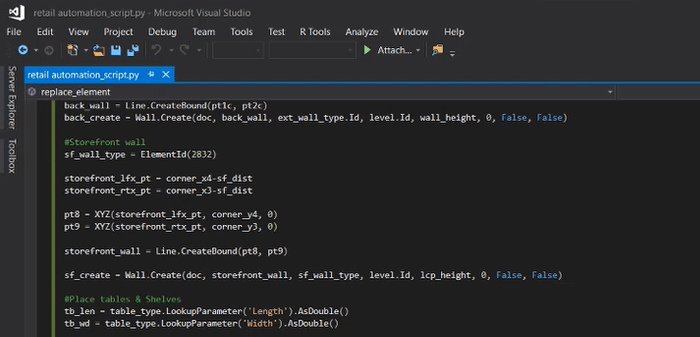Why take this course?
Having the ability to develop In-House Technology Tools for your organization is a highly coveted skill to have as a professional. On this course, you'll learn how to do exactly that. We'll take you to step by step in how to set up your development environment and teach you how to script your own Plug-Ins using Revit's API and Python Scripting language.
What will you do on this course?
For the practical purposes of this course, Sam will teach you how to create a tool that automates the layout of a retail store. You'll create a tool with several parameters that will allow you to specify different design aspects of the space like dimensions, number, and types of furniture, lighting fixtures among other things.
Development Environment Setup
In this course, you'll learn how to set up your own development environment from scratch and also the use of helpful tools for the creation of your Revit Plugins such as PyRevit and Revit Look Up.
Define your Plug-In parameters
Learn how to design your own tools by identifying key parameters that will drive the usage of your application and create UI Forms to allow users to interact with your tool. Learn how to make decisions based on usability to allow a wider usage of your tool.

Revit API
Learn how to use Revit API to interact with your application, and call native API elements, Geometry manipulation, and design logic. We'll dive into Revit API Docs for you to learn how the SDK is structured and how to read the documentation.
Optimization & Error Handling
Once you have developed your Plug-In, you'll also learn some useful techniques for optimizing your plug-ins and correcting errors with different debugging techniques, and also some techniques for testing and deployment.

1.- Introduction
02min 20seg2.- Resources and examples using Revit API
06min 28seg3.- Setting our development environment
09min 36seg4.- Introduction to Revit API
12min 52seg5.- Python Resources
10min 18seg6.- Print "Hello World"
06min 39seg7.- Setting Plug-In parameters
13min 30seg8.- Creating our UI form
09min 40seg9.- Adding inputs to our form
09min 29seg10.- String manipulation functions
04min 02seg11.- Extracting grid coordinates and grid information
11min 05seg12.- Adding elements from the Revit API
10min 14seg13.- Creating the floor bound
03min 23seg14.- Creating the walls layout
06min 48seg15.- Creation of Revit families (Tables & Shelves)
13min 01seg16.- Using transformation elements
05min 44seg17.- Creating rear doors
05min 54seg18.- Adding the lighting ceiling panels
06min 57seg19.- Placing primary and secondary lights
05min 09seg20.- Improvements to our Retail Plug-In
08min 20seg21.- Improving the Plug-In form layout
03min 43seg22.- Optimizing the call of space corners
07min 04seg23.- Using the random library for multiple testing
02min 04seg24.- Debugging errors
12min 19seg25.- Exception Handling
03min 54seg26.- PyRevit advanced topics
12min 59seg27.- Course Review
01min 23seg
